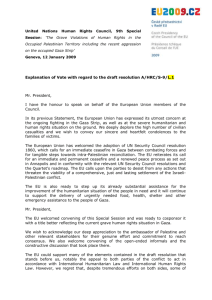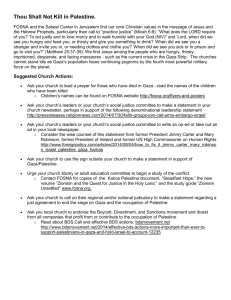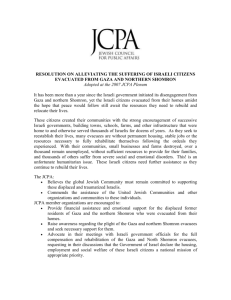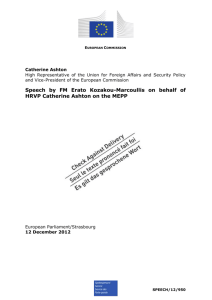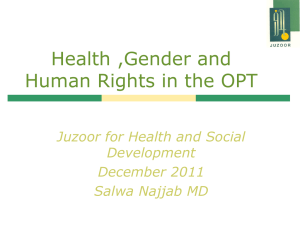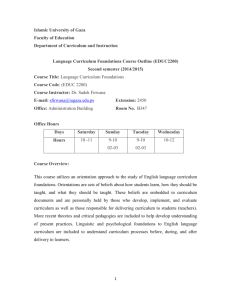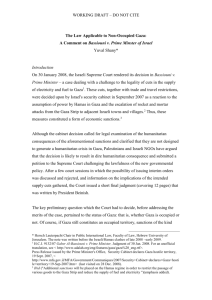Is Gaza still occupied territory? by Iain Scobbie
advertisement
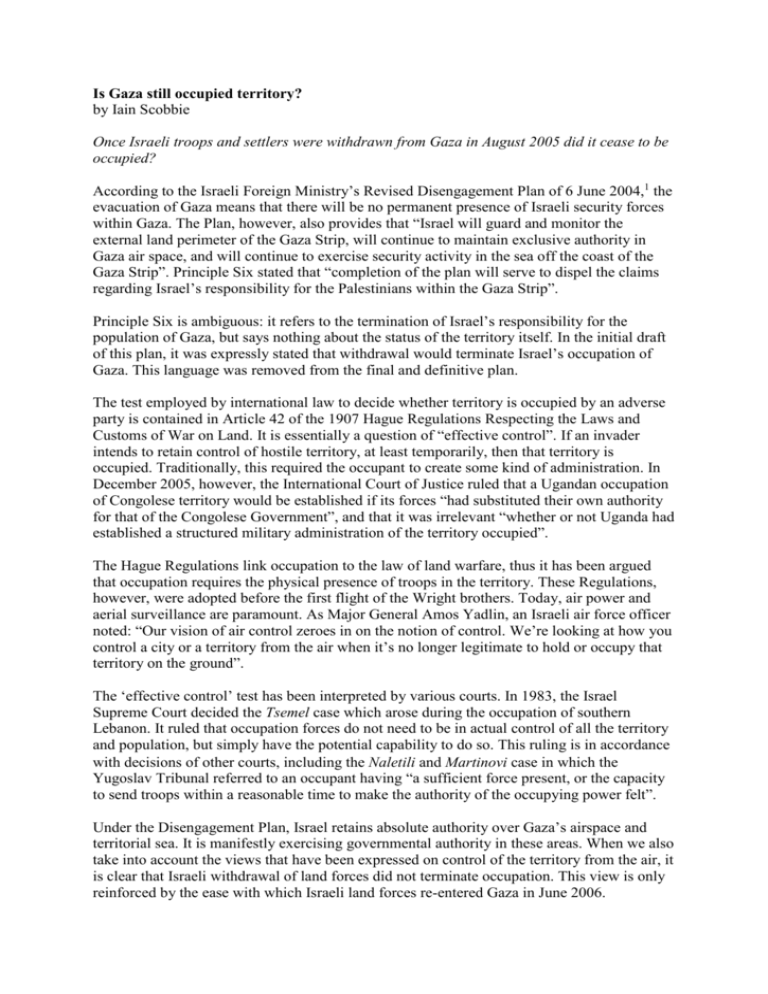
Is Gaza still occupied territory? by Iain Scobbie Once Israeli troops and settlers were withdrawn from Gaza in August 2005 did it cease to be occupied? According to the Israeli Foreign Ministry’s Revised Disengagement Plan of 6 June 2004,1 the evacuation of Gaza means that there will be no permanent presence of Israeli security forces within Gaza. The Plan, however, also provides that “Israel will guard and monitor the external land perimeter of the Gaza Strip, will continue to maintain exclusive authority in Gaza air space, and will continue to exercise security activity in the sea off the coast of the Gaza Strip”. Principle Six stated that “completion of the plan will serve to dispel the claims regarding Israel’s responsibility for the Palestinians within the Gaza Strip”. Principle Six is ambiguous: it refers to the termination of Israel’s responsibility for the population of Gaza, but says nothing about the status of the territory itself. In the initial draft of this plan, it was expressly stated that withdrawal would terminate Israel’s occupation of Gaza. This language was removed from the final and definitive plan. The test employed by international law to decide whether territory is occupied by an adverse party is contained in Article 42 of the 1907 Hague Regulations Respecting the Laws and Customs of War on Land. It is essentially a question of “effective control”. If an invader intends to retain control of hostile territory, at least temporarily, then that territory is occupied. Traditionally, this required the occupant to create some kind of administration. In December 2005, however, the International Court of Justice ruled that a Ugandan occupation of Congolese territory would be established if its forces “had substituted their own authority for that of the Congolese Government”, and that it was irrelevant “whether or not Uganda had established a structured military administration of the territory occupied”. The Hague Regulations link occupation to the law of land warfare, thus it has been argued that occupation requires the physical presence of troops in the territory. These Regulations, however, were adopted before the first flight of the Wright brothers. Today, air power and aerial surveillance are paramount. As Major General Amos Yadlin, an Israeli air force officer noted: “Our vision of air control zeroes in on the notion of control. We’re looking at how you control a city or a territory from the air when it’s no longer legitimate to hold or occupy that territory on the ground”. The ‘effective control’ test has been interpreted by various courts. In 1983, the Israel Supreme Court decided the Tsemel case which arose during the occupation of southern Lebanon. It ruled that occupation forces do not need to be in actual control of all the territory and population, but simply have the potential capability to do so. This ruling is in accordance with decisions of other courts, including the Naletili and Martinovicase in which the Yugoslav Tribunal referred to an occupant having “a sufficient force present, or the capacity to send troops within a reasonable time to make the authority of the occupying power felt”. Under the Disengagement Plan, Israel retains absolute authority over Gaza’s airspace and territorial sea. It is manifestly exercising governmental authority in these areas. When we also take into account the views that have been expressed on control of the territory from the air, it is clear that Israeli withdrawal of land forces did not terminate occupation. This view is only reinforced by the ease with which Israeli land forces re-entered Gaza in June 2006. Iain Scobbie is the Sir Joseph Hotung Research Professor in Law, Human Rights and Peace Building in the Middle East at the School of Oriental and African Studies, University of London. Email: is17@soas.ac.uk He will publish an extended analysis of the status of Gaza after disengagement in the forthcoming volume of the Yearbook of Islamic and Middle Eastern Law and on the Hotung Programme’s website, www.soas.ac.uk/lawpeacemideast. 1 www.israel-mfa.gov.il/MFA/Peace+Process/Reference+Documents/Revised+Disengagement+Plan+6-June2004.htm
